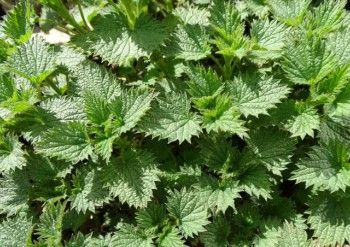Collect herbs… but correctly!
To collect, dry and use herbs and plants yourself, it is important to have a good knowledge of the plants. In any case, the beginner is better advised to get the necessary herbs in stores, first-class and inexpensive goods can be obtained in pharmacies and health food stores.
Do not collect herbs yourself without good plant knowledge, collection errors can have serious or even fatal consequences!
Medicinal plants are medicinally active, so before collecting, you should be informed about appearance, risks of confusion, effective parts of the plant, time of growth and time of collection. If there is even the slightest risk of confusion, refrain from collecting this plant and first inform yourself about the exact appearance, in many communities there are herbalists or plant courses.
Confusion can be fatal in the worst case scenario. Start carefully, only collect plants you know in the beginning. It is often not sufficient to collect plants from photos, even here confusion can arise if the photo shows only parts or details are not clearly visible.
Collect herbs and plants
Plants are collected only dried on nice days. Raindrops or dew should no longer be present. Roots are collected early in the morning or in the evening, because here the active substance concentration is present in the root and is not needed to supply the aboveground parts.
(Druids gathered roots not only according to the time of day but also according to the phase of the moon, at new moon, that is when there is no moon in the sky, the “pull” of the moon on the liquid components of a plant is not present, the active ingredients are in high concentration in the root). Above ground parts of the plants are collected on sunny days at noon, at this time the concentration of active substances is the highest.
A very good “practice plant” is the nettle, this plant should be generally known and memorized by involuntary contact with the stinging hairs.
Tips for collecting herbs
Plants should always be collected only at a great distance from roads and industrial areas, also do not collect plants from freshly fertilized fields or from areas treated with artificial fertilizers. Check if the collection area is not used as a “dog run. Some plants are also under strict protection of nature, so it is punishable to collect such plants.
When you have found the plants you need, pay attention to their appearance. The plant must be clean, without stains or signs of rot, and dry. So do not collect after the rain! Also pay attention to the instructions describing which parts to collect, with some plants only some parts are usable, other parts are even poisonous.
The plants are always cut off, never torn out to give the root the opportunity to sprout anew. Collect only really needed quantities you not the entire occurrence of the plant at this collecting place, the plant parts should last at the most to the next collecting season, so one protects nature and gives it the possibility also in the following year the plants again at the well-known place to let grow.
The plants are placed, separated by variety, in a basket or air-permeable transport box, never use plastic bags or tightly closed containers. Store only loosely, do not press. If a collection takes longer, the crop should not be left in the sun to prevent it from wilting or rotting too quickly.
Back home sort the plants by species. Leaves and flowers can be spread loosely on a stretched bed sheet and dried in an airy place, protected from sun and moisture. Turn over well every day. Plants with stems are tied together at the lower end into small bundles and z.B. tied to a roof beam. Again, make sure to choose an airy, not too warm, dry and shady location.
Roots are washed and chopped, dried at 30 – 40 °C in the oven with the door open. Turn often thoroughly to ensure even drying.
When the plant parts are dried, they are crushed and stored in glass or plastic containers. Of course, the label and the date must not be forgotten. Medicinal herbs keep ca. 1 year.
The containers should be controlled, so that no rot makes other dry plants unusable.
